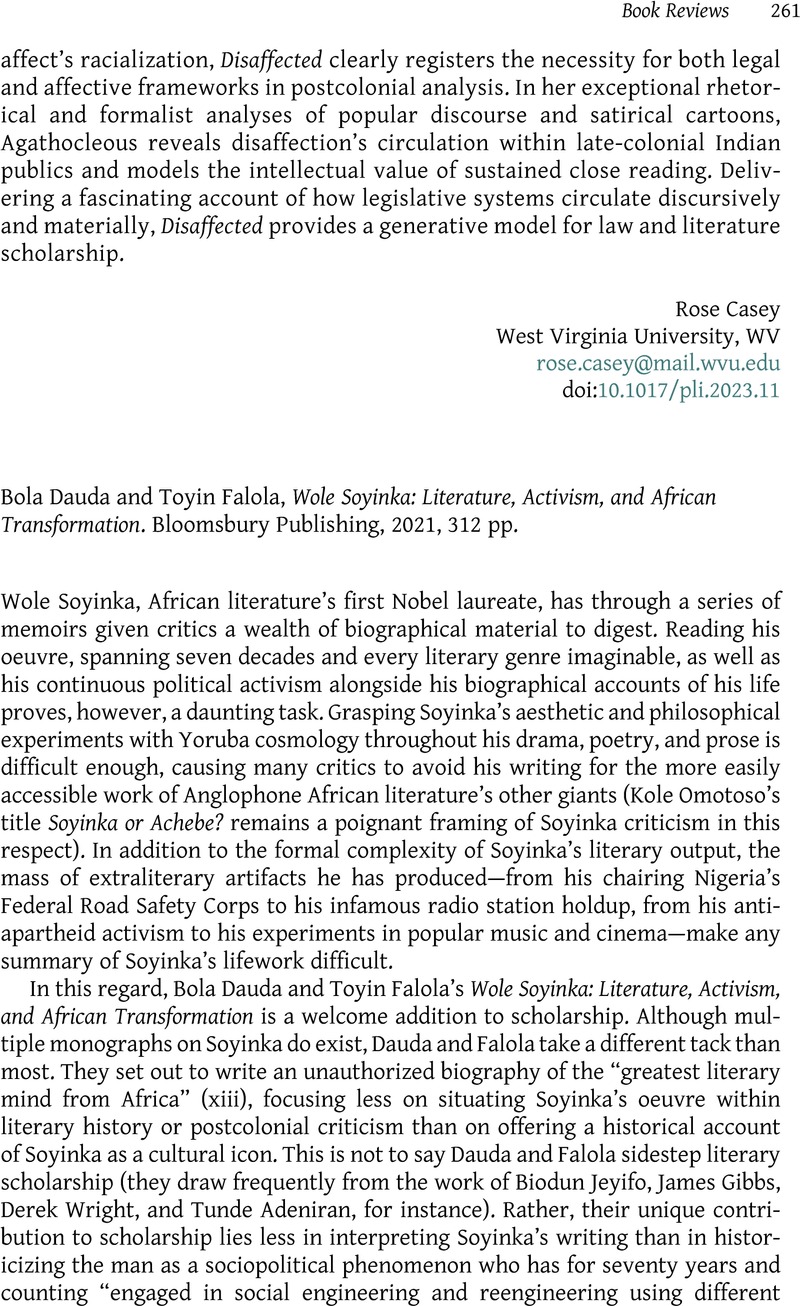No CrossRef data available.
Article contents
Bola Dauda and Toyin Falola, Wole Soyinka: Literature, Activism, and African Transformation. Bloomsbury Publishing, 2021, 312 pp.
Review products
Bola Dauda and Toyin Falola, Wole Soyinka: Literature, Activism, and African Transformation. Bloomsbury Publishing, 2021, 312 pp.
Published online by Cambridge University Press: 26 April 2023
Abstract
An abstract is not available for this content so a preview has been provided. Please use the Get access link above for information on how to access this content.

Information
- Type
- Book Reviews
- Information
- Cambridge Journal of Postcolonial Literary Inquiry , Volume 10 , Special Issue 2: Special Issue: The Luso-African Literary World , April 2023 , pp. 261 - 263
- Copyright
- © The Author(s), 2023. Published by Cambridge University Press


